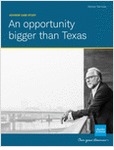What You Need to Know
- Experts say the typical financial services consumer is confused about fiduciary issues and conflicts of interest.
- Anticipated regulations could dampen some conflicts, but advisors will need to educate their clients about any changes.
- Fiduciary advisors say their planning-based skillsets and client loyalty are their most important deliverables in 2023.
Retirement industry experts say there is a strong chance the Labor Department will propose new fiduciary regulations later this year, possibly as soon as this quarter, but they also continue to wonder whether the illusive goal of fiduciary clarity is even possible in the retail retirement market.
There is “just a huge amount of muddiness out there in the water right now with respect to the fiduciary and best-interest service topics,” Maura Mallaney, a senior vice president and financial advisor at Wealth Enhancement Group, recently told ThinkAdvisor.
“I have worked on both the brokerage and fiduciary advisor side of this business, and I can tell you with 100% confidence that most consumers don’t understand the difference,” Mallaney says. “In fact, I think this is one of the biggest challenges we face as true advisors — making sure our clients and potential clients understand the importance of working with the right person at the right time.”
As Mallaney and others explain, the fiduciary confusion stems from a number of related causes, starting with the simple fact that financial markets are complex, and thus the ways that service and product fees are assessed, collected and distributed by firms is complicated and ever-evolving.
Add to this difficulty the fact that multiple federal and state regulators set their own changing (and at times contradictory) best-interest requirements for different types of financial professionals, and it is no wonder people are confused.
As they work on educating clients and consumers about this nuance, Mallaney and others say they are eagerly awaiting the next key regulatory step forward in the pending proposal of a new fiduciary rule by the Labor Department.
Their broad expectation is that Labor will nominally strengthen the fiduciary protections that pertain to advisor professionals recommending rollovers from workplace defined contribution plans into individual retirement accounts, but the actual facts won’t be known until the DOL’s formal proposal emerges.
A Fraught and Complex History
Speaking recently with ThinkAdvisor, Skip Schweiss, CEO of Sierra Investment Management, echoed many of Mallaney’s comments, suggesting confusion about conflicts of interest remain one of the most difficult issues to tackle in the retail wealth management arena.
Schweiss is well-known in the RIA industry as the former president of TD Ameritrade Trust Co. and managing director of advisor advocacy for TD Ameritrade Institutional. He was also the 2021 president of the Financial Planning Association, a role he took on after a prior five-year stint as an FPA board member, during which time he focused much of his efforts on regulatory and legislative issues.
Schweiss says he understands why the typical consumer is confused about fiduciary issues, because the conflict of interest rules for brokerage and advisor professionals have been in constant flux since at least 2010. That was when the Labor Department, under the direction of then-President Barack Obama, sought to significantly strengthen, unify and modernize the fiduciary standards applying to advisory professionals and brokers.
What followed from that initial spark can only be described as an epic regulatory battle, Schweiss says, with multiple iterations of Labor’s fiduciary rule ultimately emerging before an intervention by a federal appeals court halted the entire effort in 2018.
During this time, a parallel regulatory effort by the Securities and Exchange Commission delivered Regulation Best Interest. Most recently, the Labor Department “reinterpreted” its so-called five-part fiduciary test to explicitly cover rollovers.








 January 30, 2023 at 03:53 PM
January 30, 2023 at 03:53 PM












 Copyright © 2024 ALM Global, LLC. All Rights Reserved.
Copyright © 2024 ALM Global, LLC. All Rights Reserved.